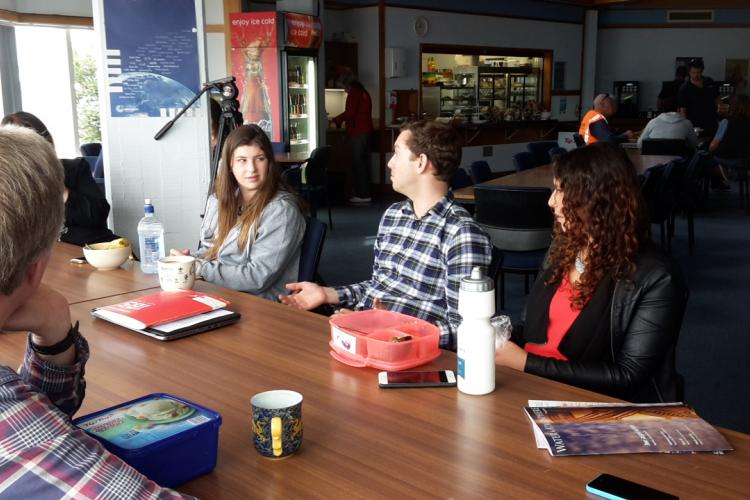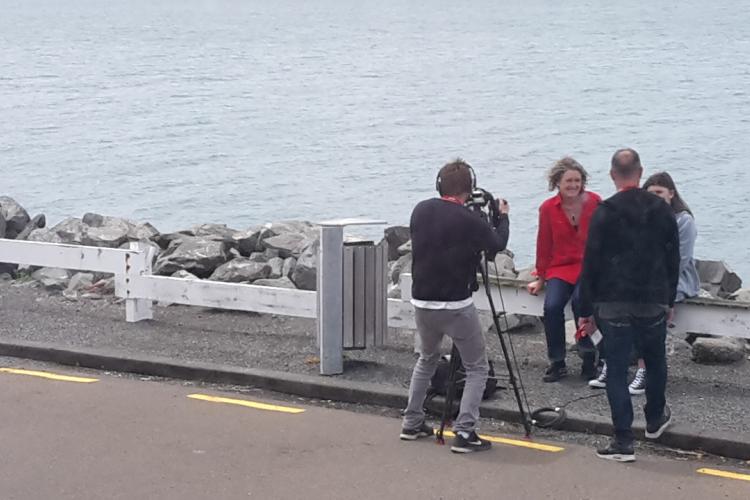Why is the Deep South Challenge interested in Jamie’s World?!
- AUTHORRhian Salmon
- November 18 2016
Why is the Deep South Challenge interested in Jamie’s World?!
Last Thursday, social media star Jamie Curry set off to Antarctica, courtesy of Antarctica New Zealand. Rhian Salmon, Science Lead for Engagement, explores the relationship between Jamie and the Deep South Challenge.
From a communications perspective, she’s an interesting and bold choice – now twenty, she has been a rising star online since she was 16 years old and has an especially strong following from people like herself – young, social media savvy, and possibly not overly interested in the details of climate science. From the perspective of Antarctica New Zealand, who are rapidly ramping up their social media presence and activity, she’s a great fit – she has 1.3 million followers on You Tube and nearly 10 million followers on Facebook, and most of them are in the 16 to 24-year-old demographic that has been identified as a target audience for their communications.
Find out more about Antarctica New Zealand
So what about the Deep South Science Challenge? Why are we connected with this, and what is our role?
Well, firstly, it’s important to make the point that Jamie is being hosted courtesy of Antarctica New Zealand – her trip was planned long before we got involved. While she’s there, however, she’ll be meeting researchers who are studying atmospheric physics, sea ice processes, and ocean dynamics… all of which are highly relevant to Deep South Challenge research. Information collected in these observational field studies is critical for better understanding key processes in the climate system, which we need in order to make better predictions about future climate, and therefore be able to make more informed climate-related decisions about our future.
The Deep South Challenge models this journey from data to decision-making. The Processes and Observations programme supports research into physical processes that, once better understood, will improve the skill of the New Zealand Earth System Model (NZESM) and hence climate prediction for New Zealand. These improved predictions, in turn, enable us to better understand the Impacts and Implications of climate change for New Zealand. The Vision Mātauranga and Engagement programmes use this information to build capacity so that New Zealanders can make more informed decisions about the future.
Back to Jamie Curry
Many of these climate processes mentioned above are best studied in Antarctica and the southern ocean – where Jamie is right now. When we heard that she was going to the ice, we invited her to visit Wellington on her way. While there, she visited the NIWA supercomputer, which is critical for building and running the NZESM; she went on a roadie to Baring Head, to learn more about measurements of CO2; and she stopped off on the way back at GNS Science to see where these air samples are analysed, and also take a peek at ice cores that capture a snapshot of past climate in their frozen bubbles.
It was a big day, and there was a lot of new information to process. What I hope she takes from the experience, however, is that all the great research that she’s about to see in Antarctica feeds into an enormous community of work happening across the country, all of which, ultimately, helps New Zealanders like Jamie to make more informed decisions about their future.
Follow Jamie’s Antarctica trip on Jamie’s World on YouTube – due for release in January 2017. Find out more about NIWA’s high performance computing facility, the Baring Head Atmospheric testing station, or the work at GNS Science

Jamie talks to climate modeller, Jonny Williams at NIWA 
Jamie interviews Rhian Salmon of the Deep South Challenge 
Jamie talks to Jocelyn Turnbull who specializes in radiocarbon science at GNS Science 
Jamie Curry and technician Zoe Buxton take an air sample at Baring Head
STORYTELLING
FOR CHANGE
The Deep South Challenge has always experimented with supporting or initiating different kinds of storytelling to drive climate adaptation. These long-form magazine features allow us to weave different research projects into new patterns, helping us to see our research in different ways.